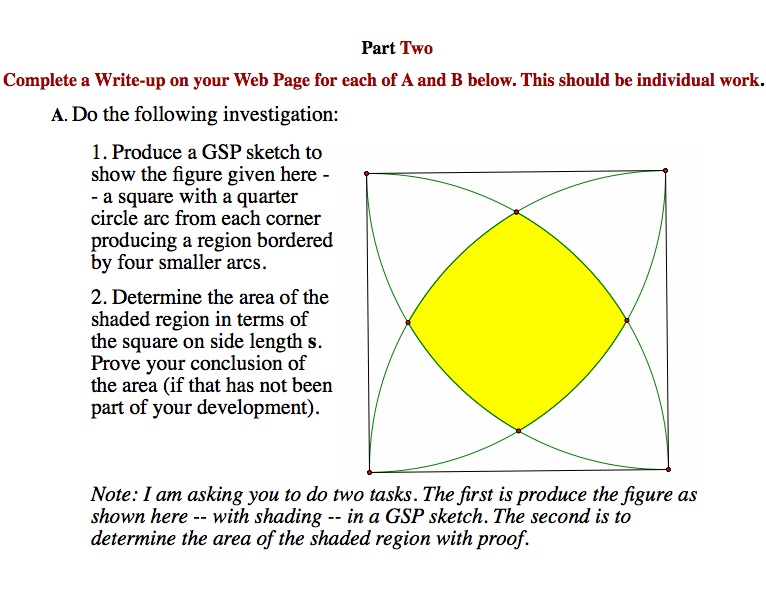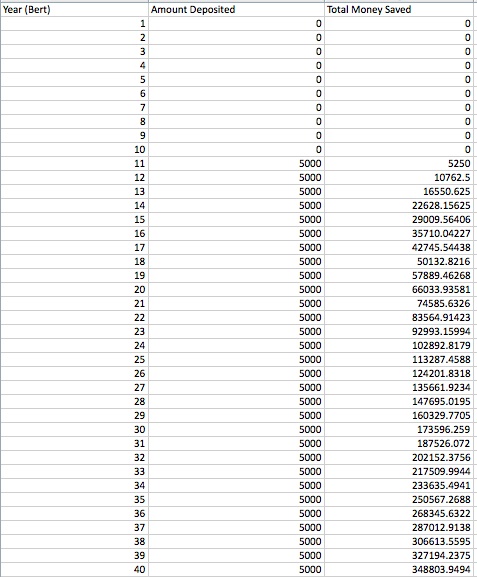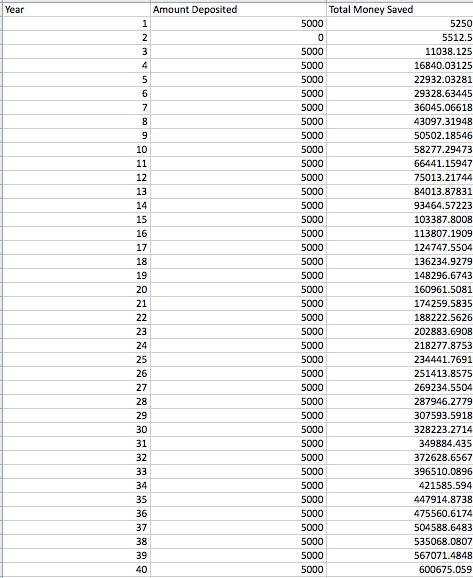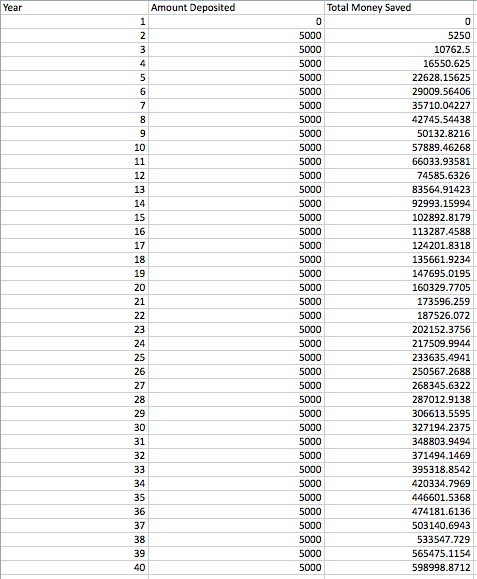
Stephen J. Morgan
EMAT 6680
Final Project

Click here for the construction of the figure!
Click here for the area of the figure!

Stephen J. Morgan
EMAT 6680
Final Project

Click here for the construction of the figure!
Click here for the area of the figure!

One thing many people in today's society do not appreciate is the value of an honest dollar. Most people find themselves in trouble as they do not save enough money each year or during the time they are alive. This task was designed
to teach students the importance of saving.
Two people save money for retirement. Person A, Amanda, starts by saving $5,000 a year for ten years. After that time, she does not despoit any more money for the next ten years. After ten years, she starts depositing $5,000 anually
once more. Person B, Bert, does not save any money for the first ten years, but starts saving $5,000 annually after that point. The annual interest rate is 5%.
I decided to explore the following questions:
1.) Does Bert catch Amanda after 20 years?
2.) Does Bert catch Amanda after 30 years?
3.) Does Bert catch Amanda after 40 years?
4.) Will Amanda have more money than Bert, who starts saving in year two, if she saves $5,000 in year one, none in year two, and $5,000 annually after that?
5.) How much money will Bert have to save annually to catch Amanda at 20 years?
To explore the first three questions I made the following excel tables:


From here we can answer the first three questions!
1.) Does Bert catch Amanda after 20 years?
No, Amanda has approximately $41,528 more dollars.
2.) Does Bert catch Amanda after 30 years?
No, Amanda has approximately $67,646 more dollars.
3.) Does Bert catch Amanda after 40 years?
No, Amanda has approximately $110,118 more dollars.
For question four, I made an additional two excel tables shown below (note the first table is Amanda and second is Bert):


4.) Will Amanda have more money than Bert, who starts saving in year two, if she saves $5,000 in year one, none in year two, and $5,000 annually after that?
No, even then Amanda has approximately $1,676 more dollars.
For question five I solved the question using the following table:

5.) How much money will Bert have to save annually to catch Amanda at 20 years?
Bert will have to save $6,579.50 annually or about $1,579 more a year to catch Amanda.
In closing, I want to state that even though the mathematics used to solve these problems is relatively simple, the power behind the mathematics is quite powerful! It also is a great way to
have students explore exponential functions. Additionally, I feel the last two prompts show how important it is to save as early as you can.